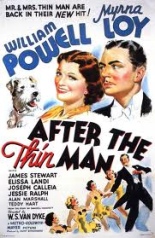
 The sequel to 1934’s The Thin Man features the return of William Powell’s hard-quipping and even harder-drinking detective Nick Charles and his hot, extremely understanding wife, Nora (Myrna Loy). Like in the first movie, Nick spends the entirety of After the Thin Man smashed while still running investigative circles around the police. To be fair, the story does take place at New Year.
The sequel to 1934’s The Thin Man features the return of William Powell’s hard-quipping and even harder-drinking detective Nick Charles and his hot, extremely understanding wife, Nora (Myrna Loy). Like in the first movie, Nick spends the entirety of After the Thin Man smashed while still running investigative circles around the police. To be fair, the story does take place at New Year.
This time, the murder is a family affair when one of Nora’s cousins is accused of murdering her no-good, philandering bum of a husband. The death doesn’t occur until about halfway through the movie, however. The first half is all about re-establishing Nick and Nora’s relationship as they move back to San Francisco after their New York adventure in the first movie. Not that that’s at all dull.
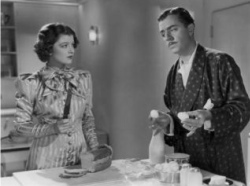 No matter how good your own relationship is, Powell and Loy will still make you jealous of theirs. That’s even more remarkable once the movie reveals just how far their individual sides of the tracks are from each other. The Thin Man hinted at it by showing Nick’s getting reacquainted with old crooks he’d put away, but it really comes into focus in the sequel. As Nick and Nora ride home from the train station, she greets people with big hats and monocles; Nick says “hello” to a pickpocket and the guy who delivers his booze.
No matter how good your own relationship is, Powell and Loy will still make you jealous of theirs. That’s even more remarkable once the movie reveals just how far their individual sides of the tracks are from each other. The Thin Man hinted at it by showing Nick’s getting reacquainted with old crooks he’d put away, but it really comes into focus in the sequel. As Nick and Nora ride home from the train station, she greets people with big hats and monocles; Nick says “hello” to a pickpocket and the guy who delivers his booze.
That makes it all the more fun when their two worlds collide, and Nora’s stuffy aunt has to ask “Nicholas” (as she insists on calling him) to quietly help the family out. Hilarity ensues (especially in a scene where Nick carries a conversation all by himself in a smoking room full of snoring, old codgers), but like The Thin Man, there’s also a great mystery with plenty of diverse suspects, one of whom is a very young Jimmy Stewart as the Nice Guy in love with Nora’s newly widowed cousin. —Michael May

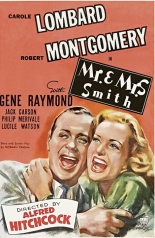

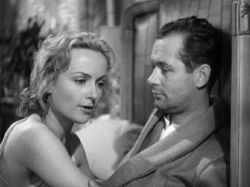 He didn’t. Mr. and Mrs. Smith is a standard screwball comedy with the requisite farce being that the title characters learn they were never legally married. When Ann Smith (Lombard) decides that that’s all for the best and that she doesn’t want to get remarried, David (Robert Montgomery) has to woo her all over again. The problem is in courting someone who already knows all his faults.
He didn’t. Mr. and Mrs. Smith is a standard screwball comedy with the requisite farce being that the title characters learn they were never legally married. When Ann Smith (Lombard) decides that that’s all for the best and that she doesn’t want to get remarried, David (Robert Montgomery) has to woo her all over again. The problem is in courting someone who already knows all his faults.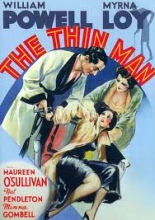
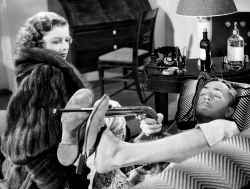 Nick finally gives in, but he’ll be damned if he’s going to sober up to solve this thing. There are lots of suspects and plenty of motives to sort through, but Nick negotiates them all with intelligence and charm without even having to set down his cocktail. He slurs and grins his way through the case all the way to the requisite, gather-all-the-suspects dinner party at the end. Nora mostly looks on with curiosity while making good-natured faces at her husband in this one, but she gets more to do in the five sequels that followed. —Michael May
Nick finally gives in, but he’ll be damned if he’s going to sober up to solve this thing. There are lots of suspects and plenty of motives to sort through, but Nick negotiates them all with intelligence and charm without even having to set down his cocktail. He slurs and grins his way through the case all the way to the requisite, gather-all-the-suspects dinner party at the end. Nora mostly looks on with curiosity while making good-natured faces at her husband in this one, but she gets more to do in the five sequels that followed. —Michael May
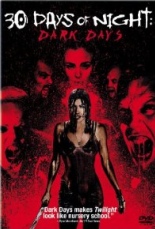
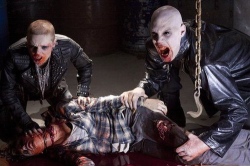 Well, they don’t have fun. Not with all the bleeding and dying and smashing friends’ heads in with cement blocks that goes on. But it was gory, gruesome fun for me. And even though the movie takes other, huge liberties with the original story (simplifying some things; completely changing others, like what the vampires are up to), Niles and Ketai came up with a story that, allowed to stand by itself, holds together in an entertaining way.
Well, they don’t have fun. Not with all the bleeding and dying and smashing friends’ heads in with cement blocks that goes on. But it was gory, gruesome fun for me. And even though the movie takes other, huge liberties with the original story (simplifying some things; completely changing others, like what the vampires are up to), Niles and Ketai came up with a story that, allowed to stand by itself, holds together in an entertaining way.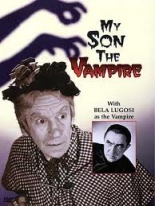
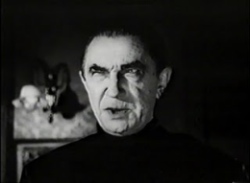 It’s the last film in Britain’s
It’s the last film in Britain’s